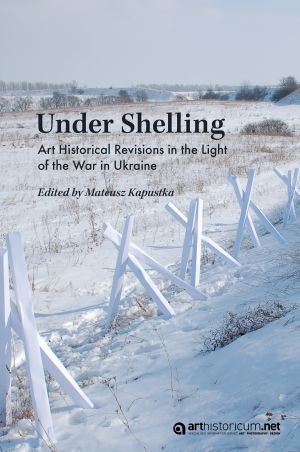Zitationsvorschlag
Versionen (Buch)
- 2025-06-03 (2)
- 2025-05-06 (1)
Lizenz (Kapitel)

Dieses Werk steht unter der Lizenz Creative Commons Namensnennung - Weitergabe unter gleichen Bedingungen 4.0 International.
Identifier (Buch)
Veröffentlicht
Versionen
- 03.06.2025 (2)
- 06.05.2025 (1)
Portraying War: Images of Enemies, Defenders, and Victims in Recent Ukrainian Graphic Arts
Russian aggression against Ukraine, which has unleashed the most major warfare in post-world-war Europe, has generated a powerful response in the works of Ukrainian artists. This new reality caused a true boom in war images that have penetrated all forms of visual mass culture – from propaganda to advertising, and from memes and comics to patriotic motivational posters and city lighting. Although warfare’s visual index of images, symbols, and connotations can be quite broad, war can also be characterized through the lens of portraiture, through the depiction of specific heroes (as individuals), or by making depersonalized images of the confronting forces – as expressions of ‘Us’ and ‘Others’. The theoretical framework of the chapter engages with the nature and visual impact of images of the defender and the enemy, drawing from publications by S. Keen (1991) and S. L. Carruthers (2000), as well as from visual culture studies approaches by W.T. J. Mitchell (2015) and T. Wright (2008).
The essay analyzes samples of recent Ukrainian graphics (across a range of media forms), interpreting how they represent ways of thinking about violence and war while also addressing modern ideas and historical stereotypes of individuals and nations. The author is aware that her interpretation – based on direct involvement and a lack of temporal and emotional distance – may be perceived as based on a non-objective attitude. At the same time, such inclusion in a live historical process allows for a more profound and contextual revealing of the topic at hand, thus showing the internal mechanisms of the formation, functioning, and influence of particular imagery.







